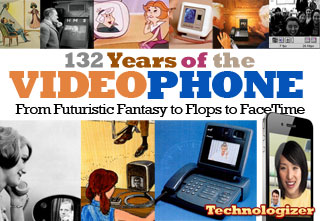
Built-in videoconferencing is an almost-standard feature in Web conferencing services these days–it’s even in SlideShare’s free Zipcast. It has, however, been missing from one of the biggest names in the business: Citrix’s GoToMeeting. But Citrix is announcing today that HDFaces, the video feature it revealed last October is going live after a bit of a delay. The company told me about the new feature last week in an appropriate way: it let me participate in a GoToMeeting session that used it. (That’s three folks from Citrix and me in the screenshot above.) Even though I was on so-so hotel Wi-Fi, it worked well.
HDFaces lets up to six people partake in a video conversation, with each person appearing in a window up to 640-by-480 in resolution. (The “HD” presumably refers to the maximum combined resolution of all the streaming video if six people are online at once–1920 by 960.) The technology adjusts for the bandwidth available: during the demo I got, the picture and audio stayed in sync and the session was about 98 percent free of choppiness or other obvious defects. As you’d expect, the video windows are integrated with GoToMeeting’s existing desktop sharing, text chat, and other features.
Starting today, HDFaces will be included at no extra charge as part of a standard GoToMeeting account, which costs $49 a month or $468 a year for unlimited meetings. (That’s for the host–it doesn’t cost anything to attend.) Archrival Webex already has videoconferencing in both its browser-based version and its iPad application: Citrix says it intends to bring the video feature to its mobile apps in the future.




 Well, looky here–the iPhone version of Skype we wanted all along is finally here:
Well, looky here–the iPhone version of Skype we wanted all along is finally here: 

